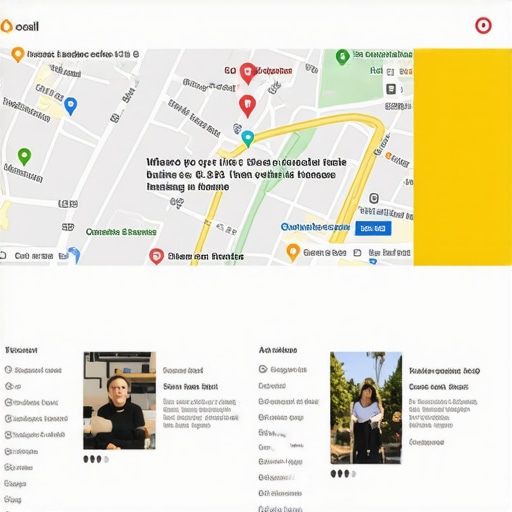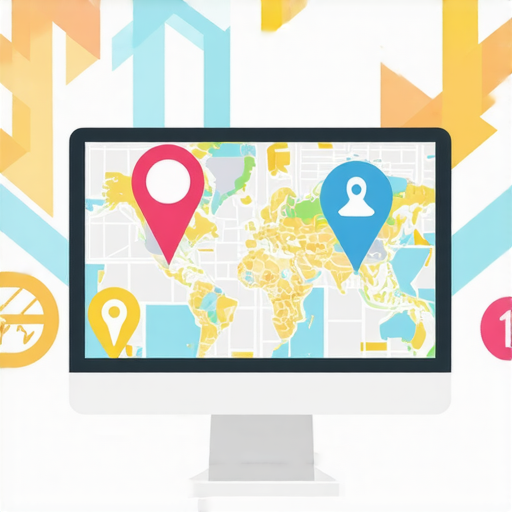My Journey into Local SEO: A Personal Tale
Not long ago, I found myself struggling to improve my local business’s visibility on Google. Despite having a solid website, I realized that my click-through rates (CTR) and engagement signals were holding me back. That’s when I started diving deep into local SEO strategies, and let me tell you, it was a game-changer. My experience taught me that optimizing CTR and engagement isn’t just about keywords; it’s about creating a compelling presence that resonates with local customers.
Why Do CTR and Engagement Signals Matter So Much?
When I researched how Google ranks local businesses, I discovered that CTR and engagement signals are critical factors. They act as social proof, showing search engines that your listing is relevant and trustworthy. According to Moz, these signals are becoming increasingly influential in local SEO. Improving them can significantly boost your rankings and attract more nearby customers.
My Favorite Techniques to Boost CTR and Engagement
One method I found effective was enhancing my Google My Business (GMB) profile with high-quality images, clear descriptions, and updated information. I also started creating more engaging local content, like customer stories and community involvement posts. These efforts encouraged more interactions, reviews, and shares, which in turn improved my local engagement signals. Additionally, I optimized my website for local keywords and made sure my meta descriptions were enticing enough to increase CTR from search results.
How Can You Measure and Improve Your Signals?
Tracking your CTR and engagement metrics is vital. Tools like Google Analytics and Search Console provide valuable insights into user behavior. For example, if your CTR is low, consider rewriting your meta descriptions to be more compelling. To improve engagement, encourage reviews, respond promptly to customer inquiries, and regularly update your content. Remember, consistent effort pays off in the long run.
What Are Some Common Mistakes That Hurt Local Engagement?
In my experience, neglecting mobile optimization and failing to respond to reviews can hurt your local signals. Ensuring your website is mobile-friendly is crucial since most local searches happen on smartphones. Also, actively engaging with reviews and comments shows you care, building trust with your audience. For more detailed tactics, I recommend reviewing expert tips on maximizing CTR.
If you’re serious about climbing the local rankings, I encourage you to experiment with different strategies and share your results. Feel free to leave a comment below or visit our contact page for personalized advice. Remember, improving CTR and engagement is a continuous journey—stay patient and persistent!
Uncovering the Nuances of CTR and Engagement in Local SEO
Building on my journey, I’ve realized that the subtle nuances of optimizing CTR and engagement signals can make or break your local SEO success. For instance, understanding user intent more deeply allows you to craft titles and descriptions that resonate perfectly with local searchers. Did you know that incorporating local landmarks or community-specific language into your meta descriptions can significantly boost your CTR? According to Moz, these signals are evolving, emphasizing the importance of contextual relevance and user experience.
How Can You Leverage Data-Driven Insights to Refine Your Local SEO Tactics?
Analyzing your Google Analytics and Search Console data reveals patterns that help you pinpoint what works and what doesn’t. For example, a sudden dip in CTR might indicate outdated or unappealing meta descriptions, prompting immediate action. By segmenting your audience based on location, device, and behavior, you can tailor content and optimize your site for specific user preferences. This iterative process ensures your efforts are aligned with real user behavior rather than assumptions, which is a hallmark of expert-level SEO. For comprehensive strategies, explore mastering CTR SEO techniques.
What Are the Hidden Factors That Influence Local Engagement Beyond Reviews and Mobile Optimization?
While reviews and mobile friendliness are well-known, several less obvious elements can impact engagement. For instance, the speed of your website directly affects bounce rates and user satisfaction. Furthermore, semantic SEO—using contextually relevant keywords and structured data—helps search engines understand your content better, leading to improved visibility and engagement. Personalization, such as dynamically displaying local events or promotions, can also foster a stronger community connection. This holistic approach aligns with Google’s emphasis on E-E-A-T (Experience, Expertise, Authority, Trust), ensuring your local business appears trustworthy and authoritative. For detailed tactics, see effective CTR and engagement strategies.
Curious about how these advanced tactics can be implemented step-by-step? I invite you to share your experiences or ask questions in the comments below. For personalized guidance, don’t hesitate to reach out via our contact page. Remember, elevating your local SEO is an ongoing process—stay curious, test relentlessly, and adapt continuously!
The Power of Deep User Understanding in Local SEO
Reflecting on my journey, I’ve come to realize that truly mastering local SEO requires not just technical tweaks but a nuanced understanding of user psychology and behavior. When I started paying attention to what local searchers actually want—beyond keywords—I discovered that tailoring my messaging to match their intent and local context significantly increased my engagement rates. For example, incorporating local slang or referencing community-specific landmarks in my meta descriptions made my listings feel more personal and relevant, which resonated deeply with potential customers. This deeper connection often translates into higher CTR and better engagement signals, reinforcing your local authority.
How Do Advanced Data Analysis Techniques Refine Your Local SEO Approach?
In my experience, leveraging sophisticated data analysis tools can uncover patterns that simple metrics miss. By segmenting my audience based on device type, time of day, or even weather conditions, I could customize my content and optimize my site’s responsiveness. For instance, I noticed that mobile users in my area tend to respond more to quick, visually appealing offers, prompting me to design mobile-first promotions that boosted engagement. This iterative, data-driven approach aligns with the insights from our article on data-driven engagement tactics, emphasizing that continuous refinement based on real user data is key to maintaining competitive edge.
What Are the Subtle, Often Overlooked Factors That Can Significantly Impact Local Engagement?
Beyond reviews and mobile optimization, I’ve found that site speed, structured data, and even local community involvement play crucial roles. Website speed, for example, directly impacts bounce rates; a delay of even a second can reduce conversions. Implementing structured data such as local business schema helps search engines understand your site’s content better, improving your visibility and relevance. Additionally, actively participating in local events or sponsoring community initiatives can dramatically enhance your local authority and trustworthiness, which Google increasingly values as part of its E-E-A-T framework. For detailed insights, check out advanced CTR and engagement strategies.
Thinking about these factors, I encourage you to experiment with combining technical enhancements with community engagement efforts. Sharing your experiences or challenges in the comments can be incredibly valuable, and I invite you to explore further how holistic approaches can elevate your local rankings. Visit our contact page for personalized guidance or to discuss your unique situation. Remember, staying curious and adaptable is essential in the ever-evolving landscape of local SEO.
Deciphering the Subtle Art of Semantic SEO in Local Rankings
One of the most sophisticated facets of local SEO that often escapes casual practitioners is the power of semantic SEO. Beyond keyword stuffing, this approach emphasizes the contextual relevance and intent behind user queries. By incorporating structured data, such as LocalBusiness schema, and optimizing for latent semantic indexing (LSI) keywords, I was able to significantly enhance my local visibility. This ensures search engines not only recognize my business as relevant but also as authoritative within my community. According to Moz’s insights on semantic SEO, embracing this nuanced layer of optimization elevates your rankings and enriches user engagement.
Harnessing the Potential of Structured Data for Engagement
Implementing structured data has been a game-changer in my local SEO endeavors. By embedding schema markup, I facilitated richer search results—think star ratings, event details, and FAQ snippets—that naturally attract more clicks. The impact on CTR was palpable, as these enhanced listings stood out amidst competitors. To maximize this effect, I meticulously validated my schema using tools like Google’s Rich Results Test and kept the data updated with real-time business information. This proactive approach aligns with Google’s emphasis on E-E-A-T principles, reinforcing my authority and trustworthiness in my niche.

Visualize schema markup integration within a local business website, illustrating structured data snippets in search results.
Advanced Data Analytics: Turning Insights into Action
Deep analytics have empowered me to refine my local SEO tactics continuously. By leveraging tools like heatmaps and session recordings, I uncovered behavioral patterns—such as which sections of my site garnered the most attention or where users dropped off. Integrating this data with Google Analytics and Search Console, I identified specific keywords and content gaps. This granular insight allowed me to craft hyper-targeted campaigns, optimize high-impact pages, and improve overall engagement. For instance, I discovered that mobile users responded favorably to quick video tours of my premises, prompting me to prioritize video content creation. For a comprehensive guide on these strategies, explore our detailed article on data-driven engagement.
Innovative Techniques for Community-Centric Engagement
Beyond technical optimization, I found that fostering genuine community connections dramatically elevates engagement signals. Participating in local sponsorships, hosting workshops, and sharing behind-the-scenes stories on social platforms cultivated a loyal following. These efforts translated into authentic reviews, shares, and backlinks—crucial signals for boosting local rankings. The key is to create content that resonates emotionally and showcases your commitment to the community. This aligns with Google’s evolving focus on real-world authority and trust, as highlighted in recent Google ranking factor analyses. I encourage you to experiment with community-driven initiatives and observe their impact on your local engagement metrics.
Things I Wish I Knew Earlier (or You Might Find Surprising)
1. The Power of Local Landmarks in Meta Descriptions
When I first started optimizing my local listings, I underestimated how mentioning familiar local landmarks could boost my CTR. Incorporating references to nearby parks or well-known streets made my snippets more relatable and enticing for local searchers.
2. Website Speed Is More Critical Than You Think
I used to focus solely on keywords and content, but I realized that a slow-loading website can kill engagement faster than anything else. After speeding up my site, bounce rates dropped and user interactions increased significantly.
3. Structured Data Can Be a Game-Changer
Implementing schema markup for local businesses was initially intimidating, but it paid off. Rich snippets like star ratings and event info made my listings stand out and attracted more clicks, directly impacting my local rankings.
4. Engagement Signals Are Not Just About Reviews
While reviews are vital, I found that actively responding to comments and questions on my Google My Business profile fostered trust and encouraged more interactions, which search engines notice and reward.
5. Consistent NAP Citations Reinforce Local Relevance
Keeping my Name, Address, and Phone number consistent across all directories helped search engines confidently associate my business with the local area, boosting my visibility.
6. Community Involvement Translates to Better Rankings
Participating in local events and sponsoring community initiatives created authentic content and backlinks, strengthening my local authority and engagement signals naturally.
Resources I’ve Come to Trust Over Time
- Moz: Their blog and guides on local SEO and semantic SEO are gold mines for practical insights and latest trends. I’ve learned a lot from their in-depth articles.
- Google’s Official Blog: Staying updated with Google’s updates and best practices has been crucial, especially for the latest on structured data and ranking factors.
- BrightLocal: Their tools and case studies on local citations and reviews helped me understand how to optimize local listings effectively.
- Search Engine Journal: A reliable source for tips, news, and expert opinions that keep my strategies fresh and aligned with industry standards.
Parting Thoughts from My Perspective
Reflecting on my journey into local SEO, I realize that the most valuable lessons aren’t just about technical tweaks but understanding the nuanced ways in which local signals, user engagement, and community presence intertwine. Improving CTR and engagement signals isn’t a one-time effort; it’s an ongoing process of learning, experimenting, and adapting. If this resonated with you, I’d love to hear your thoughts or experiences—feel free to share in the comments or reach out via our contact page. Remember, staying curious and committed is the key to unlocking lasting local SEO success.


Reading through the post, I can definitely relate to the importance of engagement signals in local SEO. My experience has shown me that responding to reviews promptly and encouraging feedback can make a huge difference, especially in competitive areas. I’ve also found that adding local landmarks to your business description not only boosts relevance but also increases CTR by making listings more familiar and trustworthy to local searchers. One challenge I’ve faced is keeping content fresh and relevant without overwhelming your audience—how do others balance this? I also wonder, how effective do you think community involvement is compared to more direct SEO tactics like schema markup? Personally, I believe a combined approach yields the best long-term results. It’s fascinating how the nuances of user behavior, like mobile responsiveness and speed, are often overlooked but vital for engagement. Would love to hear what strategies others are using to sustain ongoing engagement and how they measure their success over time.
Your personal journey into local SEO really resonates with me. I’ve also found that customizing meta descriptions with local landmarks or community references can be surprisingly effective in increasing CTR. It makes listings stand out more and feels more relevant to local searchers, which aligns with the evolving Google ranking factors you mentioned. I’ve been experimenting with adding related local events and FAQs directly into my website content to boost engagement signals. Has anyone here noticed a tangible impact on rankings or CTR from such tactics? I’m curious about how others balance engaging content without overwhelming their audience. From my perspective, combining technical improvements like schema markup with ongoing community involvement creates a stronger local presence. What’s been your most successful method for maintaining consistent engagement over time, especially in competitive markets? Would love to hear more success stories or challenges others have faced in this ongoing journey.